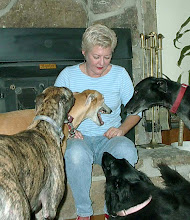Reducing euthanasia rates through aggressive spay/neuter policies is a practical exercise in community-building and changing. Those of us in rescue, who follow the euthanasia rates and know how many dogs and cats are homeless have a hard time understanding the mindset of people who don't spay and neuter their pets. How do we influence people whose mindset we don't really get? The local open admission shelter provides FREE spay/neuter aka S/N services to all county and city residents.
How best to influence the non-S/N people? And why? There's a mismatch of community identities at work -- the first step in influencing is to form that community bond, that focal point.
Education might change minds, but probably not.
If that doesn't work, the next technique is to identify another focal point that both the pro-S/N and the anti-S/N have in common. Often, the pocketbook is a persuasive factor, showing how much the necessity for controlling an overpopulation of animals costs each of us. There are other possibilities as well, some even more powerful, but it takes some thought and research to pull those focal points out AND establish the transition to the attitude toward S/N. It would be excellent, for instance, if pro-S/N were linked to "support our troops". While supporting the troops is a focal point that most folks will rally toward, the connection to S/N is not strong enough or even sufficiently evident (yet).
But establishing that linkage is not the first step. The first step is to list out the particular community focal points that link otherwise opposed communities.
Just in passing, one parallel might be the pro-life and pro-choice factions in human communities. The positions are essentially irreconcilable and education and cogent arguments are likely to have little effect. HOWEVER -- there are things that both sides can agree upon. That adoption is a GOOD thing, for instance. That we need to provide an alternative for desperate parents to abandoning infants, e.g. providing "no questions asked" alternatives for leaving newborns in a safe environment. Those need to be the focal points of both groups.
What are the implications for the S/N issue? More thoughts on that later. For now, it's sufficient to say that we've got to identify those community focal points before we can hope to effect true change.
Understanding the Trinity: A Practical Guide
6 months ago




No comments:
Post a Comment